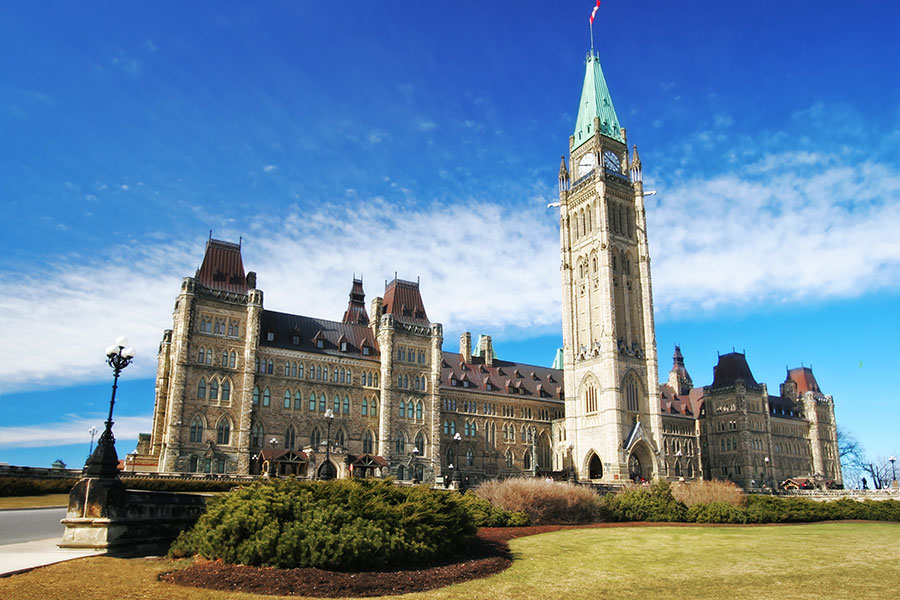This op-ed was originally published in iPolitics on December 10, 2020.
The economic crisis caused by the pandemic will leave long-lasting scars for many Canadian industries and take a heavy toll on the finances of governments at all levels.
The COVID-19 pandemic has already taken a massive toll on the Canadian and global economies. The government response has been unprecedented, with a quick rollout of fiscal and monetary policy measures that have bolstered household incomes, supported wages and provided cheap credit to households, businesses and governments.
Under a status quo scenario, in which no new programs or revenue measures are introduced, the federal debt would stabilize at roughly 55 per cent beyond 2024, and eventually start to decline.
The hope now is that economic activity in Canada will recover more fully over the second half of 2021, once a vaccine rollout is fully underway.
However, getting to the end of next year will be difficult for many businesses and households, and support programs will continue to drain the coffers of the federal and provincial/territorial governments.
Federal and provincial/territorial governments will see debt levels rise sharply in 2020–21 and the three years that follow. Over the medium-term, governments will struggle to balance their books, despite relatively low interest rates, while a longer-term perspective suggests that, on aggregate, the situation for provinces and territories is untenable.
In its November 30 fiscal update, the federal government tallied up the costs of COVID-19 and the impact on the deficit—which will swell to $382 billion in 2020–21. The provinces and territories too have tallied record deficits—$92 billion, on aggregate, we estimate. Taken together, the fiscal gap will account for roughly 22 per cent of GDP this year.
But the pandemic’s effect on the economy will be long-lasting, resulting in ongoing massive deficits for both levels of government. In an upcoming report from The Conference Board of Canada, we assess the longer-term fiscal outlook for Canada and the aggregate provinces and territories. The situation suggests that governments at both levels will see their finances squeezed for decades to come.
Excluding the $70 to $100 billion in additional post-COVID stimulus announced in the federal fiscal update, current spending plans by both levels of government coupled with a lasting negative hit to revenues will add copiously to public debt. Over the four fiscal years, 2020–21 to 2023–24, federal and provincial/territorial governments are expected to amass $864 billion in deficits and add $940 billion to the aggregate net debt. This will bring the aggregate net debt as a share of GDP to over 95 per cent, levels not seen since the early 1990s.
Under a status quo scenario, in which no new programs or revenue measures are introduced, the federal debt would stabilize at roughly 55 per cent beyond 2024, and eventually start to decline. The provinces and territories are not so fortuitous—their aggregate net debt-to-GDP ratio will rise steadily under the status quo.
Excluding health and debt servicing costs, total expenditures by the provincial/territorial governments are expected to post growth of 2.8 per cent annually over the 20-year forecast horizon—0.3 percentage points below annual growth in revenues. The provinces and territories, however, face higher debt financing costs and must deal with the burden of health care. We assume that health care spending grows at a pace in line with pouring tomorrow’s demography into today’s health care system. That is, no cost increases associated with improving health care systems or increased access are accounted for, just the cost increases associated with a growing and aging population.
The result is growing deficits and increasing debt financing costs for the provinces and territories—with their net debt-to-GDP ratio rising from roughly 30 per cent pre-COVID, to 40 per cent in 2023–24. By 2030–31, the ratio would top 53 per cent under our status-quo scenario, in line with that of the federal government and pushing our aggregate net debt-to-GDP ratio to well above 100 per cent.
COVID-19 has forced the hand of governments, requiring massive fiscal and monetary stimulus and additional health care spending. Looking ahead, however, there’s no more room to manoeuvre. Policy makers must start planning for the longer-term. Provinces and territories will look for additional health transfers from the federal government, which the federal government can’t afford without implementing additional revenue measures, or provinces will be forced to raise taxes themselves.
Canadian taxpayers benefit from the programs and policies implemented at both levels of government, but they are also on the hook for their combined liabilities. Given the current spending commitments, governments combined cannot continue to deliver on their current programs without additional revenue measures. Once the crisis is past, tax increases or spending restraint are the only solutions, just to keep to a 95 per cent fiscal anchor.


